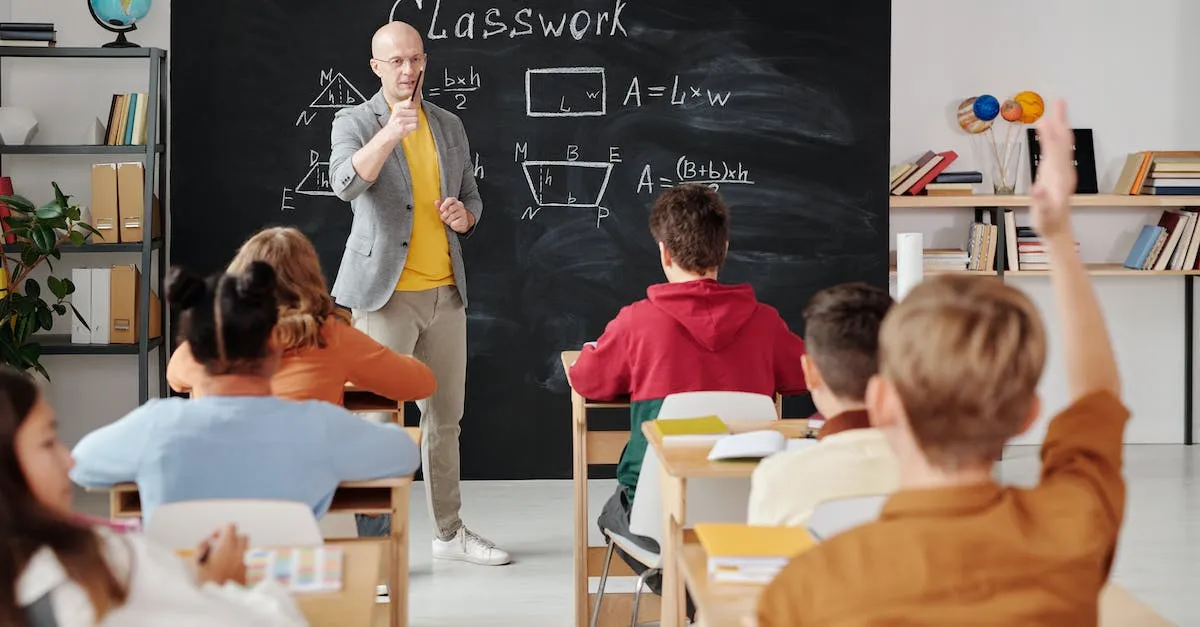What Is A Class C License In Texas?
Getting a driver’s license is an important rite of passage for many people. If you live in Texas and are looking to get your first license, you’ll likely aim for a Class C license, which allows you to drive regular passenger vehicles.
If you’re short on time, here’s a quick answer to your question: A Class C license in Texas allows you to drive regular passenger vehicles like cars and small trucks (up to 26,000 pounds) and recreational vehicles. To get a Class C license in Texas, you’ll need to pass vision and written tests, complete a driving test, and meet Texas residency and age requirements.
In this comprehensive guide, we’ll cover everything you need to know about getting a Class C driver’s license in Texas, including:
Requirements for a Class C license, Differences from other license types, Steps to getting your Class C license, Restrictions and laws for Class C drivers, and Costs for getting and renewing your license.
Requirements for a Class C License in Texas
Minimum Age Requirements
To obtain a Class C license in Texas, you must meet certain age requirements. The minimum age to apply for a Class C license is 18 years old. However, if you are under the age of 18, you may still be eligible for a Class C license if you have completed an approved driver education course and meet other specific requirements set by the Texas Department of Public Safety (DPS).
It is important to note that individuals under the age of 18 who hold a Class C license are subject to certain restrictions, such as a curfew and limitations on the number of passengers they can transport.
Tests You Must Pass
Before obtaining a Class C license in Texas, you are required to pass both a written knowledge test and a driving skills test. The written knowledge test covers various topics, including traffic laws, road signs, and safe driving practices.
It is essential to study the Texas Driver Handbook and practice with sample test questions to ensure you are well-prepared.
Once you have successfully passed the written test, you will need to demonstrate your driving skills by taking the driving skills test. This test assesses your ability to operate a vehicle safely and confidently on the road.
It is important to practice driving in different situations and environments to increase your chances of passing the test.
Other Requirements
In addition to meeting the age requirements and passing the necessary tests, there are a few other requirements you must fulfill to obtain a Class C license in Texas. These include:
- Completing a driver education course (if under 18 years old)
- Providing proof of identity and lawful presence in the United States
- Completing the application form and paying the required fee
- Passing a vision test
- Meeting any additional requirements set by the DPS
It is important to consult the official Texas DPS website for the most up-to-date and detailed information regarding the requirements for a Class C license in Texas. You can find more information at www.dps.texas.gov.
How a Class C License Differs from Other Licenses
When it comes to driver’s licenses in Texas, there are several different classes to choose from depending on the type of vehicle you plan to operate. One of the most common types is the Class C license. Here’s how it differs from other licenses:
Class A Licenses
A Class A license is the highest level of commercial driver’s license (CDL) available in Texas. It allows drivers to operate vehicles with a gross combination weight rating (GCWR) of 26,001 pounds or more, as long as the towed vehicle weighs more than 10,000 pounds.
This license is necessary for driving vehicles such as tractor-trailers and truck and trailer combinations.
For more information on Class A licenses, you can visit the Texas Department of Public Safety website.
Class B Licenses
A Class B license is also a CDL and allows drivers to operate vehicles with a GCWR of 26,001 pounds or more, but the towed vehicle must weigh less than 10,000 pounds. This license is typically required for driving larger buses, such as school buses or city buses, as well as dump trucks and delivery trucks.
If you want to learn more about Class B licenses, you can check out the Texas Department of Public Safety website.
Class M Licenses
While Class A and Class B licenses are for operating commercial vehicles, a Class M license is specifically for motorcycle operators. It allows individuals to ride motorcycles, mopeds, and other two-wheeled vehicles on Texas roads.
To obtain a Class M license, individuals must pass a written test, a skills test, and complete a motorcycle safety course.
For more details about Class M licenses, you can visit the Texas Department of Public Safety website.
It’s important to note that a Class C license is different from these other licenses because it is not a CDL. It is the standard driver’s license for non-commercial vehicles and allows individuals to operate cars, trucks, and SUVs that do not meet the requirements for a Class A or Class B license.
So, if you’re planning to drive a regular passenger vehicle in Texas, a Class C license is what you need. However, if you’re interested in operating larger commercial vehicles or motorcycles, you’ll need to obtain the appropriate CDL or Class M license.
Steps to Getting Your Class C License
Get Your Learner’s Permit
To begin the process of obtaining a Class C License in Texas, you will first need to acquire a learner’s permit. This permit allows you to practice driving with a licensed adult who is at least 21 years old and has at least one year of driving experience.
To obtain your learner’s permit, you will need to visit your local Texas Department of Public Safety (DPS) office and bring the necessary documentation, such as proof of identity, proof of residency, and proof of completion of a driver’s education course.
The DPS will also require you to pass a written knowledge test, which will assess your understanding of Texas traffic laws and safe driving practices.
Pass the Road Test
Once you have practiced driving with your learner’s permit and feel confident in your abilities, you can schedule a road test to demonstrate your practical driving skills. The road test will typically involve driving on public roads while an examiner from the DPS assesses your ability to follow traffic laws, properly use signals, and execute safe maneuvers.
It is important to practice a variety of driving scenarios, such as parking, merging, and navigating intersections, to increase your chances of passing the road test successfully. Don’t forget to bring a vehicle that meets the requirements set by the DPS, including valid registration and proof of insurance.
Get Your License
Once you have successfully passed the road test, you can proceed to obtain your Class C License. To do this, you will need to return to the DPS office and provide the necessary documentation, including proof of identity, proof of residency, and proof of passing the road test.
You will also need to pay the required fee for your license. After submitting your application and completing the necessary paperwork, you will receive your Class C License, allowing you to legally operate a non-commercial motor vehicle in the state of Texas.
For more detailed information on the steps to getting your Class C License in Texas, you can visit the official website of the Texas Department of Public Safety at https://www.dps.texas.gov/.
Restrictions and Laws for Class C Drivers
License Restrictions
When it comes to Class C drivers in Texas, there are certain restrictions that they need to be aware of. One of the main restrictions is that Class C drivers are only allowed to operate vehicles that weigh less than 26,001 pounds. This means that they cannot drive large trucks or buses.
Additionally, Class C drivers are not permitted to tow more than 10,000 pounds. These restrictions are in place to ensure the safety of both the driver and other road users.
Traffic and Safety Laws
Class C drivers in Texas are expected to adhere to a set of traffic and safety laws to maintain order on the roads. These laws include obeying speed limits, using turn signals when changing lanes or making turns, stopping at red lights and stop signs, and yielding to pedestrians.
It is also important for Class C drivers to understand and follow laws related to distracted driving, such as not texting or using handheld devices while driving. These laws are crucial in preventing accidents and promoting safe driving practices.
For more detailed information on the restrictions and laws for Class C drivers in Texas, you can visit the official website of the Texas Department of Public Safety. They provide comprehensive information on driver’s licenses and regulations, which can be a valuable resource for any Class C driver.
Costs for Getting and Renewing Your License
Fees for Licensure
Obtaining a Class C License in Texas comes with certain costs that you should be aware of. The fee for applying for a new Class C License is typically around $25 to $30. This fee covers the processing and administration costs associated with your application.
It’s important to note that this fee may vary depending on your specific county or municipality, so it’s always a good idea to check with your local Department of Public Safety (DPS) office for the most accurate and up-to-date information.
Additionally, if you are required to take a written knowledge test or a driving skills test as part of the licensure process, there may be additional fees associated with these tests. These fees can range from $10 to $25, depending on the type of test and the location where it is administered.
Renewal Costs and Requirements
Once you have obtained your Class C License, it is important to keep it current by renewing it before it expires. In Texas, Class C Licenses are typically valid for a period of six years. The renewal fee for a Class C License is around $25 to $30, similar to the initial application fee.
When renewing your license, you may also be required to provide certain documentation or complete additional requirements. For example, you may need to provide proof of identity and residency, as well as pass a vision test.
It’s important to review the specific requirements for license renewal in your county or municipality to ensure that you meet all the necessary criteria.
It’s worth noting that if your Class C License has been expired for more than two years, you may be required to go through the entire licensure process again, including taking the written knowledge test and driving skills test.
This can incur additional costs, so it’s best to renew your license on time to avoid any unnecessary expenses.
For more detailed information on the costs associated with obtaining and renewing a Class C License in Texas, you can visit the official website of the Texas Department of Public Safety at www.dps.texas.gov.
Their website provides comprehensive information on fees, requirements, and renewal procedures to help you navigate the process smoothly.
Conclusion
Getting your first driver’s license is an exciting milestone. With a Texas Class C license, you’ll be ready to hit the open roads in a regular passenger vehicle and start experiencing the freedom that comes with driving.
Just be sure to study hard for your written exam, practice your driving skills, and review Texas’ road rules and restrictions for Class C drivers. With this license, you’ll be ready to take on new adventures on the road.








